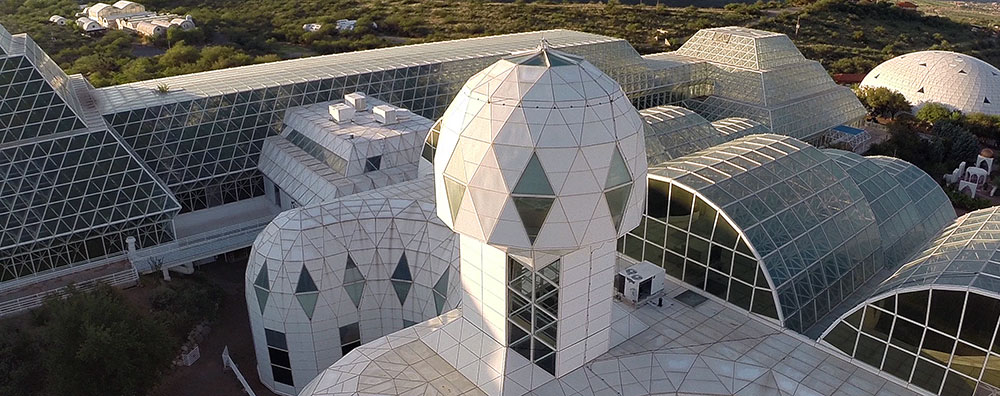
For more than five decades, experiments in closed ecosystems have been conducted to various degrees and scales by governments, universities, and private organizations. The intent—to learn the minimum complexity required to sustain human life for long-duration, off-world missions.
Each of these studies, whether mostly biological as with the Biosphere 2 or mostly mechanical as with the International Space Station (ISS), has been met with the challenge of real-world complexity. It is a hybrid of these two approaches that must be integrated if we are to become an interplanetary species.
Mechanical carbon dioxide scrubbers, oxygen concentrators, water purifiers, and waste management systems are an effective, proven means for keeping humans alive, as implemented on board military submarines and human space flight systems. But every submarine can surface in a matter of minutes and ISS astronauts can return to Earth in hours.
Once we are living on the Moon, Mars, or a distant moon of Jupiter we will no longer be able to conduct immediate rescue. To support these ventures, sustainable, mostly self-contained ecosystems must be realized to a certain degree of perfection, with mechanical life support systems as backup only.
We are four or five years from again walking on the Moon, a decade to setting boots on Mars, yet NASA has not conducted a closed ecosystem experiment since the mid 1990s. In the 1970s, the Russian Institute of Biophysics achieved 99% system efficiency with BIOS3. In the late ‘80s, NASA built Biohome, a closed ecosystem that could sustain a single human. The LSSIF (the “can”) was built in the mid ‘90s with physico-chemical and bioregenerative experiments, but now lies mostly in disuse at NASA JSC. It’s successor, the Bioplex, included crew quarters, rover and Mars yard. However, it was scrapped before completion with a shift in leadership and direction.
For two decades ESA’s MELiSSA has worked to gain an understanding of bioregenerative life support systems for long-term human missions with an emphasis on total reuse of all waste products. Beijing’s University of Aeronautics and Astronautics built Lunar Palace, a fully self-contained, human-in-the-loop ecosystem. In 2017 four researchers entered for 60, 200, and 105 days consecutively, publishing research on CO 2 levels, protein production, gut microbes and their effect on moods, and the challenges of living in confined, close quarters. Analogs HI-SEAS, HERA, Mars 500, and the Concordia Research Station principally conduct psychological studies in ambient air environments. The NASA funded SIRIUS in Moscow, Russia operates with a hermetic seal and is principally focused on psychology studies. The Mars Society’s open air Mars Desert Research Station (MDRS) has supported nearly 200 teams over a decade in field experiments.
The sum of all human-in-the-loop, closed Bioregenerative Life Support System (BLSS) experiments is less than a dozen, including those before the Apollo era. According to Dr. Donald Henninger, a closed ecosystem expert recently retired from NASA JSC, this lack of experience will make it difficult to construct a functioning, long-stay human facility outside of the cislunar neighborhood.
With the incredible pace at which both public and private sector organizations are developing modern vehicles and associated technologies to take humans beyond low Earth orbit, it is imperative that both mechanical and bioregenerative systems are studied not once every few years, but on a continual basis such that new technologies, improved techniques, and a deeper understanding of the complex systems required to sustain human life are incorporated into near-future missions.

